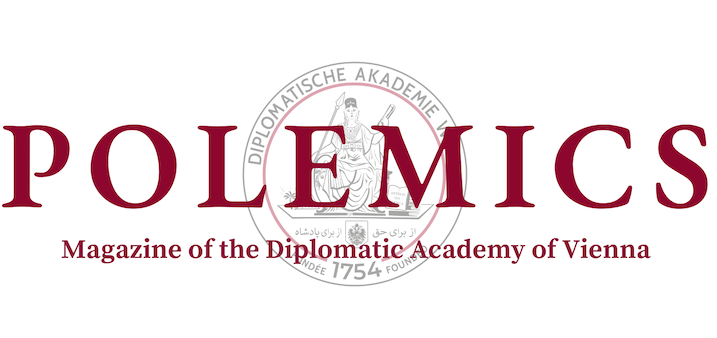“Who owns the Moon?” Although this very simple yet intriguing question would better fit in a science fiction novel, it actually belongs on the United Nations agenda. The exploration and consequent exploitation of the Moon has become increasingly relevant– and with it, attempts to achieve consensus on the questions have become more and more difficult.
The Dawn of the Space Age
In 1957, the launch of the first satellite, Sputnik, marked not only the beginning of the space age, but also shocked the rest of the world into action regarding the final frontier. In 1958, the Committee on the Peaceful Uses of Outer Space (COPUOS) was founded by the General Assembly in relative obscurity. The question of the shared use of the Moon and of its resources was raised surprisingly early in COPUOS 56 in 1959. However, the Committee concluded that its exploitation “did not require priority treatment.” Indeed, the main issue on the agenda was how to use the new space domain to advance national interests without escalating the Cold War – neither on Earth nor in outer space. Only a decade later, Neil Armstrong walked on the moon. Space travel evolved with the speed of light, and diplomacy was scrambling to keep pace.
The enactment of a certain form of regulation was very much needed, hence, in 1967, the adoption of the Outer Space Treaty established rules regarding space travel which remain valid today, including on the Moon. Most importantly, while states are free to explore outer space as they wish, they are not allowed to occupy any of the territory on celestial bodies. What this “non-appropriation principle” means in practice, remains a matter of large academic, political, and diplomatic debate – especially with lunar ambitions bigger than ever.
The Return of the Lunar Race
Since the adoption of the Outer Space Treaty, twelve people have visited the Moon – all of them American and male. Additionally, four states have successfully landed uncrewed spacecraft on the Moon: Russia in 1966, China in 2013, and both India and Japan in 2023. In the years in between, attempts to regulate the access and exploitation of the Moon have failed spectacularly – the 1979 Moon Agreement has only twenty signatories despite its adoption by consensus. COPUOS remains an active committee, unwaveringly gaining further influence and members. But the Committee has stuck to adopting voluntary guidelines regarding space sustainability and space debris mitigation, with the discussion of celestial bodies strewn under a handful of agenda items.
The last time we had a man on the moon was in 1972– aeons ago. But not for long – indeed, it almost seems like the infamous “Space Race” has been reborn in the modern era. The United States and its allies, most notably the European Space Agency, have conducted the first successful test flights for the Artemis programme, planning to land a crewed flight on the Moon as soon as 2026, with the long-term plan of a space station, the Lunar Gateway, in the Moon’s orbit. Antipodal, Russia and China are in turn aiming to establish a human presence on the Moon as soon as 2030, with the International Lunar Research Station (ILRS) starting construction in 2026 as well. And it will no doubt get crowded, especially since good landing spots are scarce. The question remains if these tensions will return space diplomacy to its old glory, or if the resulting tensions will divide the Committee for good.
Old Treaties, New Tricks
A fight for policy supremacy has taken a centrefold place, right next to that of the technological race. Together with their scientific proposals, both the United States and the Russian-China alliance have proposed their own policy approaches. The latter opposites have made clear: my rockets, my rules! In October 2020, the United States unveiled its controversial “Artemis Accords.” While mostly restating principles from the Outer Space Treaty, they also make wide-reaching interpretations, by claiming that the establishment of “safety zones” does not constitute an appropriation of the Moon’s surface. Paradoxically, the national policy of the United States clearly allows for the national appropriation of Moon resources, an interpretation seen as extremely critical both by academic commentators and states such as Russia. Many commentators criticise that the accession to the document of bilateral negotiation by the US instead of adopting it by consensus through COPUOS weakens diplomatic relations in space exploration.
Nevertheless, the document has amassed 48 signatories as of November 2024, including most European states. Moreover, the International Lunar Research Station has also found thirteen signatories. While the public Cooperation Document of the ILRS is more technical in nature, signing it is still seen as choosing a side by many. Two teams are headed straight for the Moon, and old and new space-faring nations face the decision of which horse to back in the race.
Conflicts regarding the Moon are inescapable, and COPUOS actively anticipates them. The Working Group on Legal Aspects of Space Resource Activities aims to publish an initial draft of their principles for space resource activities at the beginning of 2025, planned to be adopted by the General Assembly in 2027. And in 2024, the Action Team on Lunar Activities Consultation (ATLAC) was founded to “promote the development of safe, sustainable, and transparent lunar activities for peaceful purposes”, set to pick up its work in 2025. There have also been some notable conferences on the topic of lunar exploration in 2024 alone, with both the Sustainable Lunar Activities Conference and the Expert Meeting of the Space Resources Working Group in 2024 being attended by international audiences.
Of the 104 member states of COPUOS, 46 are part of the Artemis Accords, 12 of the IRLS, and 46 remain unaligned, most of them members of the African Union, with Austria, Norway and Portugal being notable European exceptions. As the 2024 COPUOS report states, “common ground among signatories to the Artemis Accords and partners in the International Lunar Research Station that space activities” is possible. As Aristotle said, “time is not a kind of change, but that it is something depending on change.” Only time will tell if the remaining two years until the next crewed landing will be sufficient to find common ground.
Photo credit: (1) Photo by NASA (2021, March 2) on Unsplash.









